The Brooks Caldera 6 is a cushioned trail running shoe that provides a very stable platform on uneven terrain. As of writing this article, I’ve logged 83 miles on trails with the shoe. I’ve taken it on runs that ranged from 4 to 12 miles in length. Most of the miles have been slow and leisurely and I haven’t worn it for any races. This article will cover the features of the Brooks Caldera 6 that make it a great trail shoe, and the aspects that might make you think twice about giving it a try.
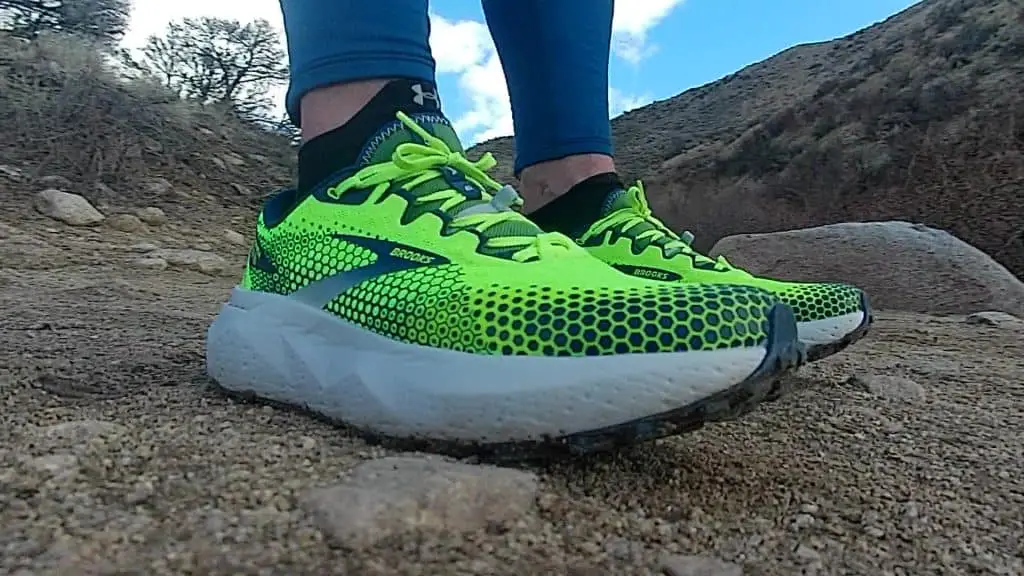
| Category | Stack Height Heel/Forefoot | Drop | Weight | Ride | Price |
| Trail | 26 mm/20 mm | 6 mm | 11 oz | Cushioned | $150 |
Overview
Ride
Arguably the most important aspect of a running shoe, the ride encompasses how a shoe feels in action. Is it squishy, or firm? Does it have energy-return or not? Does it make you want to pick up the pace or go slow?
To describe the Caldera 6 in one word I would use ‘secure’. This shoe has a way of making trails feel easy. I don’t mean to say that you feel like you’re exerting less energy, but that you don’t have to worry about foot placement. This shoe looks like it has a massive midsole, but the max stack height is only 26mm. This is because your foot sits inside the foam a little bit giving a secure wall around the lower part of your foot that prevents side-to-side movement in uneven terrain. The midsole widens toward the bottom of the shoe and provides a very stable landing platform. I never feel off-balanced because of the wide footprint.
The Caldera 6 is my ‘comfort blanket’ for trail running. Its build makes it so I don’t have to worry about how my foot lands. With the Caldera’s build, the bottom of your foot sits below the insole giving a lot of side-to-side stability.
I’d rate the feel of this shoe as cushioned. At first glance the large stack of DNA LOFT v3 makes it look like you’d be running on clouds, but that’s not quite the feel you get when running. The DNA LOFT v3 foam does compress quite a bit providing good shock absorption but also has some responsiveness the counteract the cushion. In all the Caldera 6 is not as maximalist as it looks.
The DNA LOFT v3 in the midsole has just enough energy return that I don’t feel like it robs me of energy (that’s what the Caldera 5 felt like when I tested it in the running shop). The stack height is high enough that you don’t feel (most) rocks even without a dedicated rock plate.
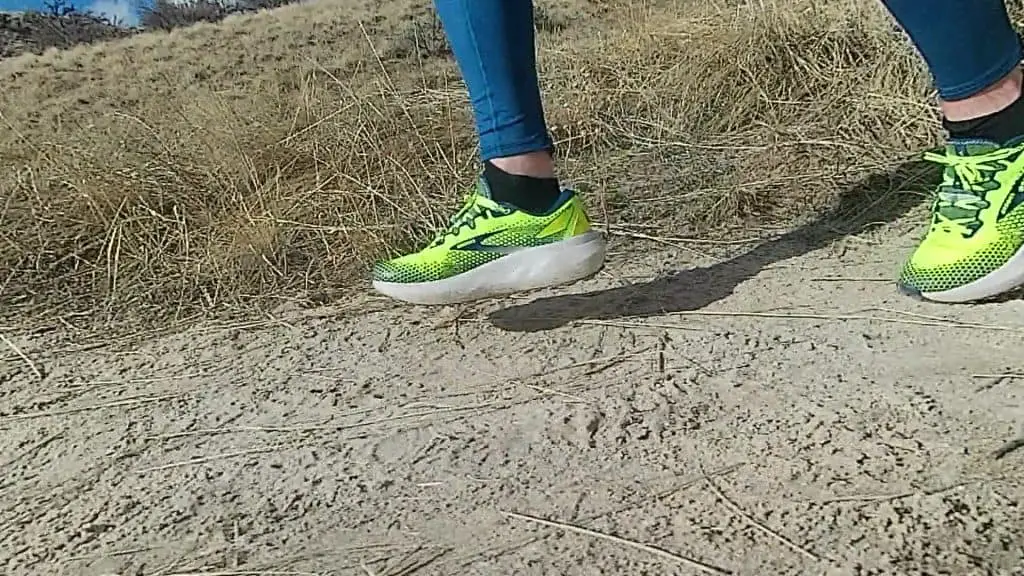
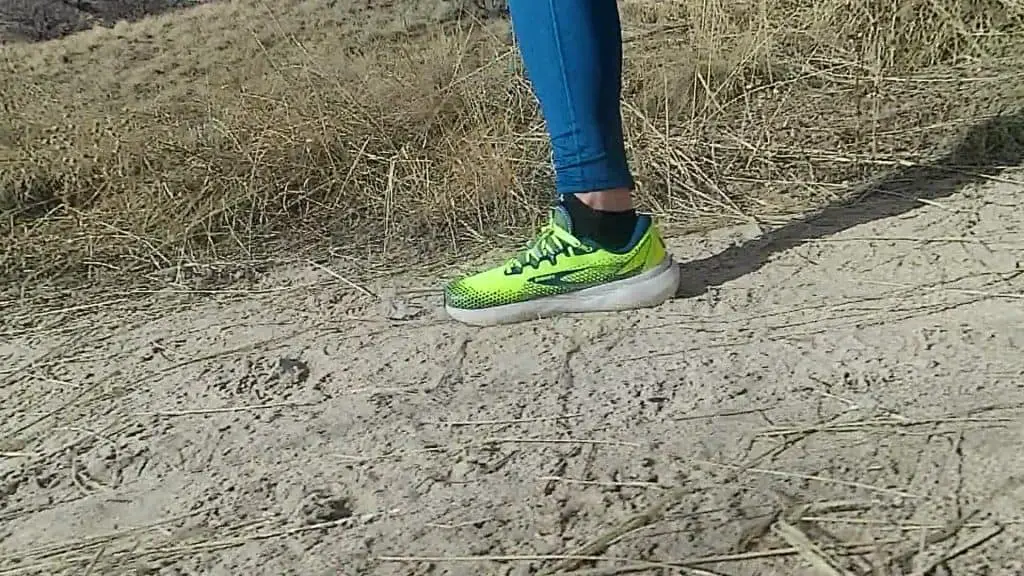
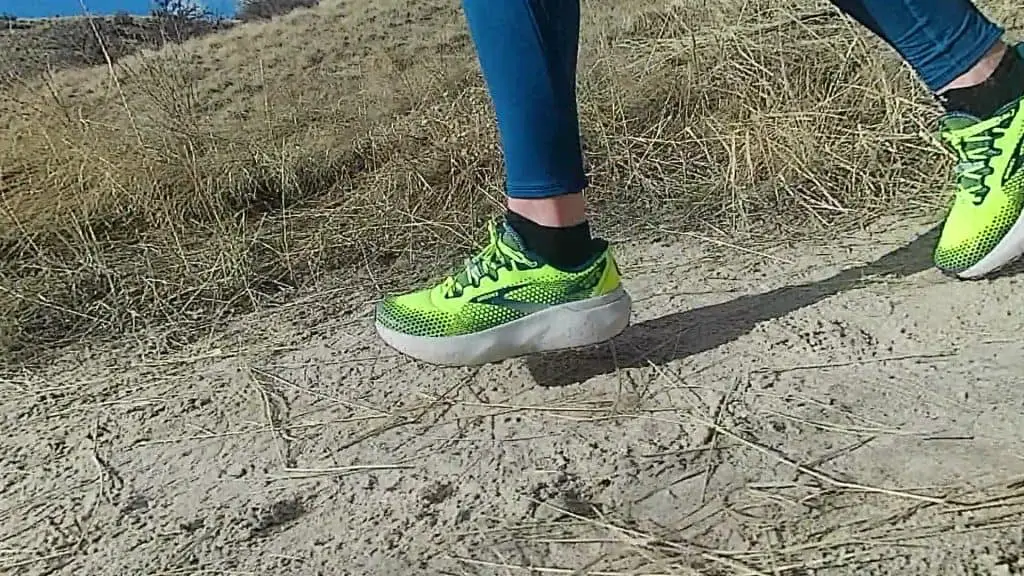
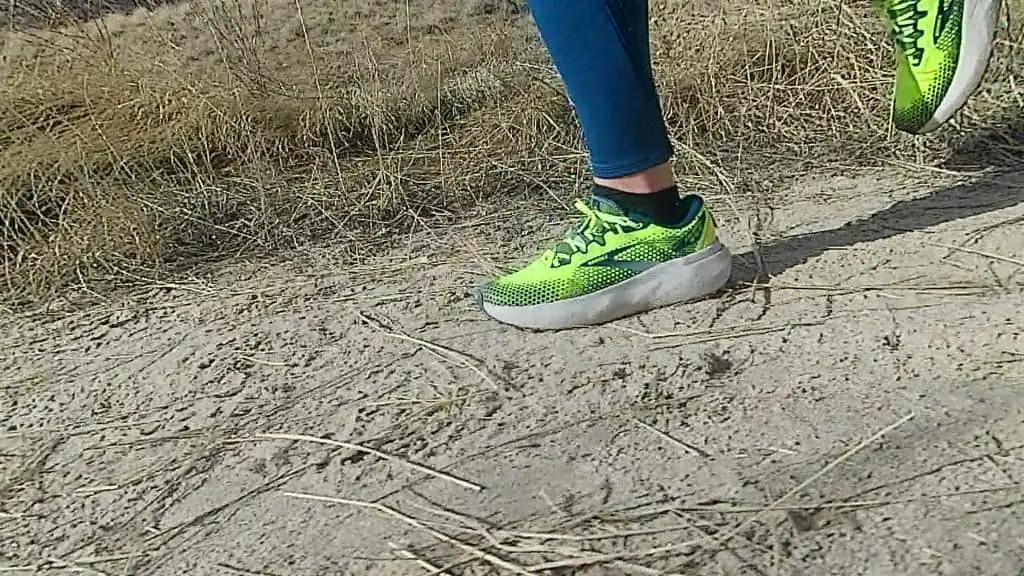
Of course, this shoe’s stability comes with a cost. The shoe’s weight and bulk. 11oz is a little on the heavy side. It doesn’t bother me too much, I usually don’t worry too much about weight. What I notice more is the bulk of the shoe. With all that foam and the wide bottom, I find myself clicking heels and scraping calves a little more than usual. It’s not too bad and after a couple of miles my running gait naturally adjusts slightly.
The outsole is tacky and aggressive enough to handle nearly any terrain. I haven’t found a trail where I was wishing for more grip. The tackiness gives good traction even on wet rocks and wood (but still be careful!). You could potentially use this shoe as a trail commuter as long as you’re not going more than a mile or two. In fact, I almost prefer the Caldera 6 on road over the Divide 3, which was designed as a crossover shoe.
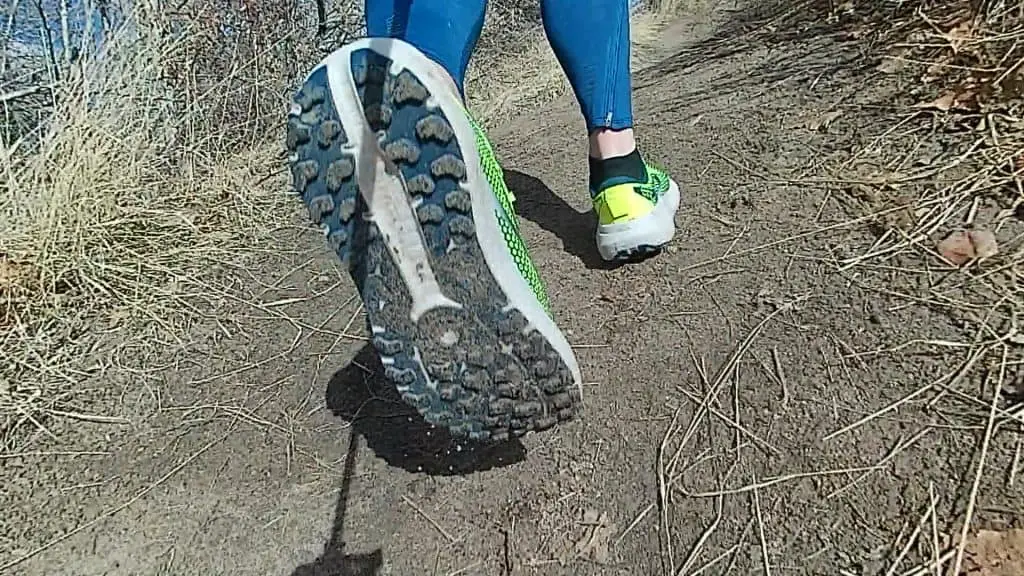
Fit, Upper, and Lockdown
I love the feel of the Caldera’s upper. With the midsole foam giving stability to the bottom of your foot, the air mesh upper is super lightweight and breathable and has just enough structure to hold your foot securely in place.
For me, the Caldera 6 fits really well. I have an average-ish foot. It’s not super wide but not really narrow. It’s rare that I get blisters from a shoe, and most shoes fit me pretty well. The Caldera has a snug (not tight), comfortable fit through the toes. It’s not as narrow as the Speedgoat, but not quite as roomy as the Xodus Ultra (v1).
There is a generous TPU overlay across the front of the shoe that gives your toes some protection and prevents debris from getting through the air mesh upper.
My one downside is that the laces are a little short when tying with a heel lock. I barely have enough room to do a single knot. Luckily, the flat laces hold the knot well and don’t come untied. The short laces do render the lace keeper useless. My feet are probably a little taller/thicker than most, so this may not be a problem for you.
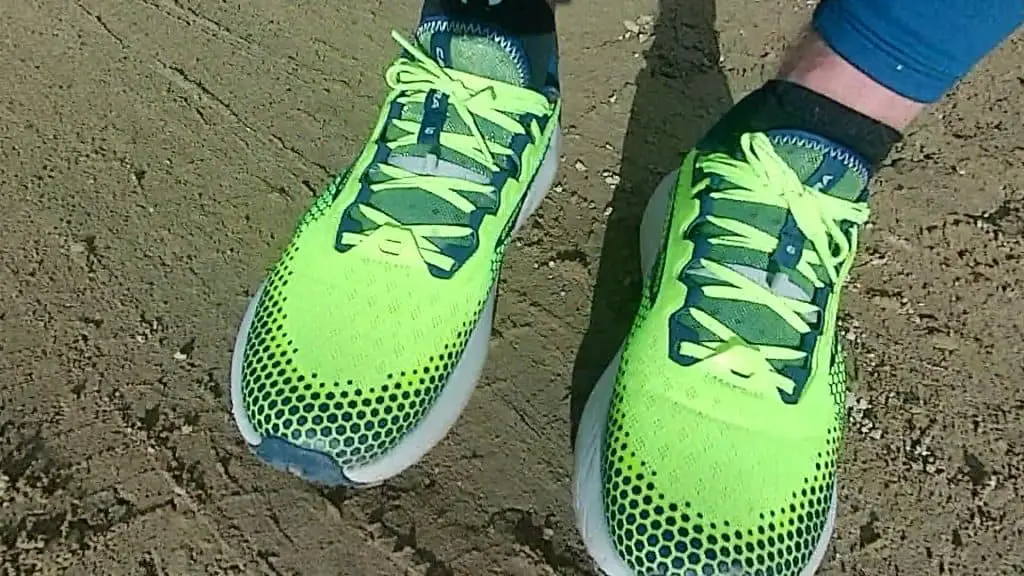
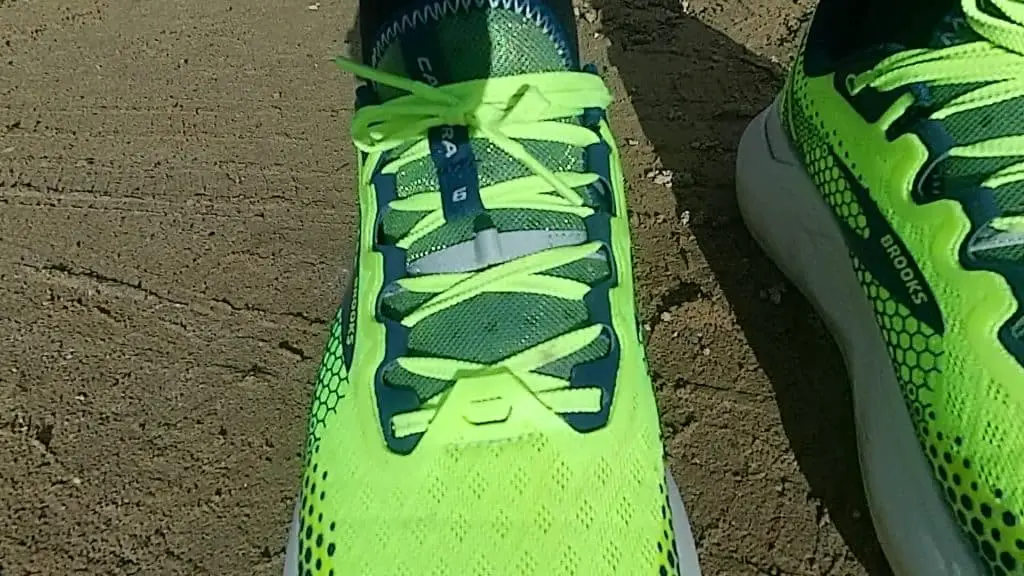
Durability
After 83 miles, the Calder 6 shows almost no signs of wear. The outsole is in good shape, with very little abrasion. I was worried the TrailTak outsole (which is quite tacky) would wear away quickly, but it seems quite robust. The outer, though lightweight, appears to be very durable with no signs of wear or abrasion. I wore out the upper on my pair of Cascadia 14s in just under 400 miles. The Caldera 6 outer appears to be of a superior build and material to the Cascadia 14, so I expect it will ‘go the distance’.
I expect the weak point (for durability) of this shoe will be the midsole. It does have some creases forming and I’m not sure how long it will last before compressing and losing its responsiveness. I’m a bigger guy for a runner (6’0″, 190 lbs), so I tend to wear out shoes faster than most. I expect I’ll get 350-500 miles out of the Calderas.
Value
At $150 retail, the Caldera 6 is just on the higher end of the average for a trail shoe. You can pick up shoes like the Xodus Ultra, Ultra Glide, and NB Fresh Foam series for $120-$140. Meanwhile, the Hoka Speedgoat comes in at about $155. So the Caldera 6 is still in the average range, but a little pricier than a lot of other trail shoes. I think it’s an okay value, but not a screaming deal. If you can pick this shoe up for around $110, do it!
Is the Brooks Caldera 6 for You?
In my opinion, the Caldera excels best as a long-run or easy-day shoe for the trails. It would also be a great all-around trail shoe. If you’re a serious racer, it’s probably a little bit on the heavy side. I don’t have a dedicated pair of trail race shoes (I’m not fast enough for shoes to make much of a difference). For most runners, the Caldera is a solid all-around trail shoe that can handle a variety of runs on off-road terrain.
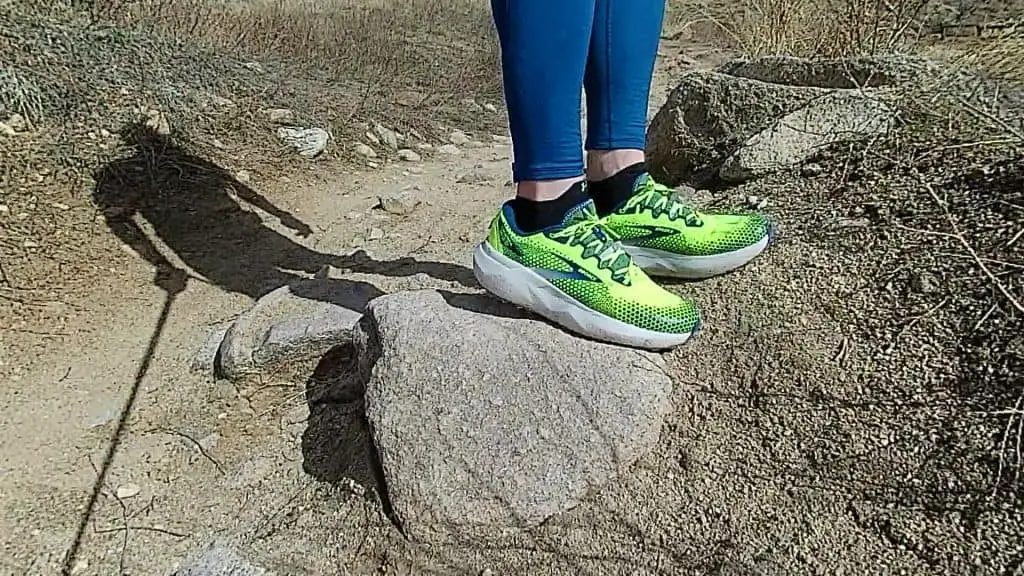
Should you avoid the Brooks Caldera 6?
There are three cases where I would not recommend the Caldera 6: if you like ground feel, if you dislike cushion/bulk, and if you want a racing-specific shoe. The Caldera is designed to give you a comfortable ride where you don’t have to worry about perfect foot placement. Because of that, it’s a little heavy and bulky. So if you want to feel the ground underfoot or cut weight this shoe is not for you. Otherwise, I think it’s a solid running shoe that will give you lots of smiles through the miles!
How I will use the Caldera 6
In my opinion, the Caldera excels best as a long-run or easy-day shoe for the trails. I really like to use this shoe on the second day of back-to-backs. The shoe’s design offers unmatched stability (in a runner), which makes it easy to run in when your mind and body don’t have the energy to focus on getting every step right.
I initially bought it to be my all-around trail shoe but then picked up the Saucony Xodus Ultra at a really good price. The Caldera could totally fill the niche of an everyday trail shoe. This is the shoe that has convinced me I don’t dislike cushion (I’m actually really starting to like it quite a bit). Because it is cushioned but has a low stack height and wide base it feels sleeker than it looks. If you like something with a responsive cushion, all signs point to the Caldera being a great shoe for you.

